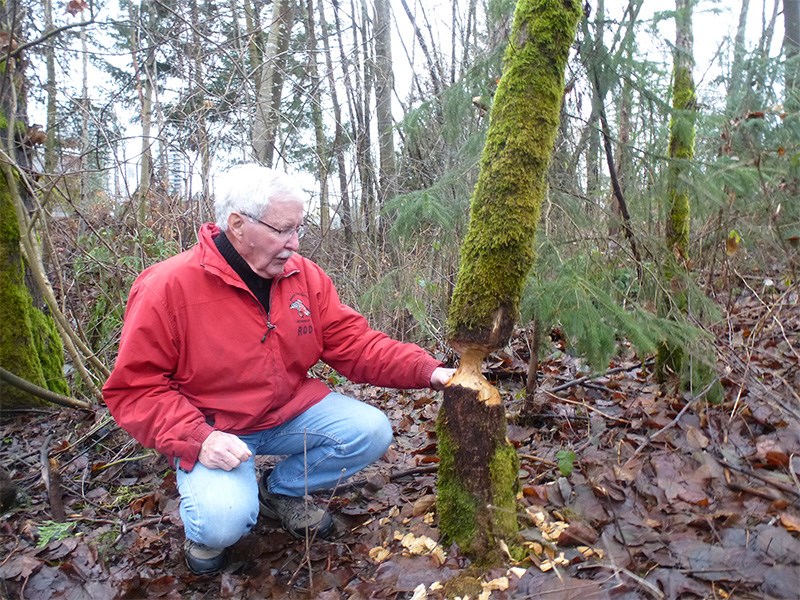It’s a rigorous and time-consuming task, but each year volunteers with the Burrard Inlet Marine Enhancement Society (BIMES) collect salmon, fertilize, count and raise thousands of chum, coho and pink salmon.
They baby them, check them for disease, release them into local creeks and Burrard Inlet and educate students and the public about the importance of B.C. salmon.
Why?
“Ultimately it’s about education and ensuring the next generation knows the importance of salmon to the eco system,” says co-founder Ruth Foster.
For BIMES in Port Moody, 40 years of work have paid off. Salmon, once a ghost species in local creeks, have returned to upper and lower Schoolhouse Creek, Mossom and Suter Brook creeks in greater numbers.
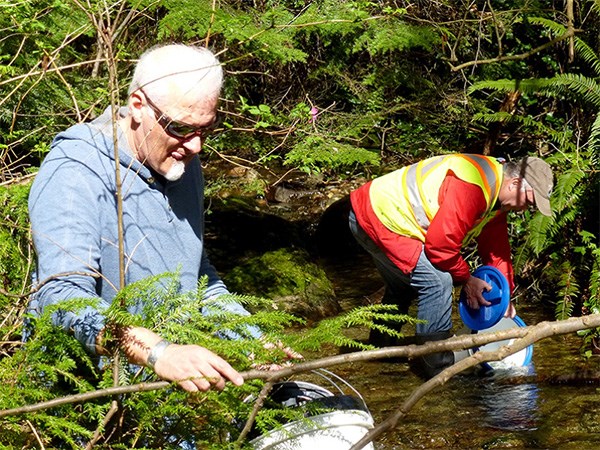
But today, as the carcasses of the last spawned coho and chum salmon rot into the soil or feed eagles, the group faces a new challenge, one that will take some deft diplomacy to deal with.
For BIMES volunteers, a beaver family that has moved into Suter Brook Creek behind Port Moody city hall has generated wide-spread community support.
The idea of a beaver family living so close to human activity is pretty novel, and the family, a bonded pair and one kit, is a testament to nature and beaver determination.
People have an emotional attachment to these creatures, says BIMES president Kevin Ryan, but he hopes the work of a city beaver management plan will also consider the importance of the creek for salmon.
“We are looking to find a balance for fish,” Ryan said.
The group points to changes in the creek wrought by beavers, especially a large dam that they believe is too high for fish to jump to get into the spawning grounds between Murray Street and the SkyTrain line. BIMES worries about the effect of tree removal on the salmon-bearing stream because trees are important for shade.
As a keystone species, they say, salmon are integral to the local ecosystem. If they are pushed out, other species could be endangered.
“You need to understand there is a whole other side to be addressed,” says Ryan, whose group works with Centennial students to raise salmon and has done stream habitat work along the creek.
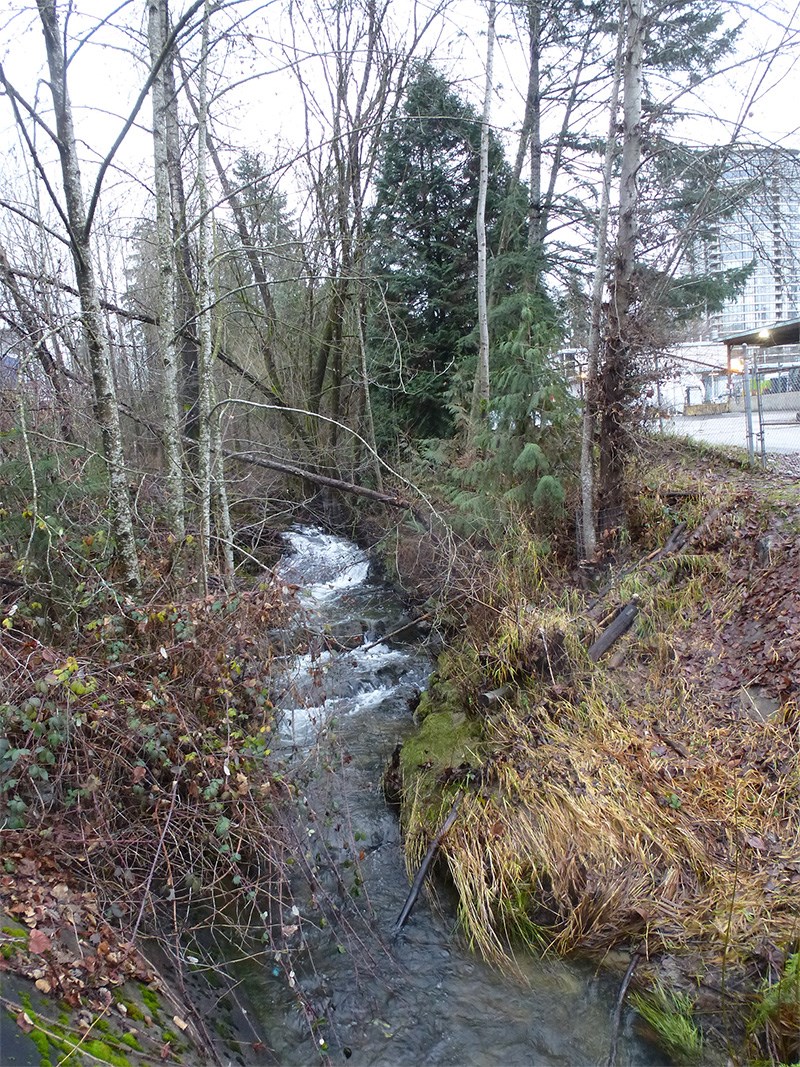
Beaver activity is apparent along the creek. Water has pooled behind a dam, blocking access to a trail, and there are now three dams in the creek and evidence of beavers taking out trees, including one that has been chewed but hasn’t yet fallen over.
But beaver activity in creeks is nothing new, and beavers have always co-existed with salmon, says Judy Taylor-Atkinson, who has spent a lot of time monitoring the beavers and is advocating for them.
“The beavers are part of the landscape. They were trapped out, but now they are returning,” said Taylor-Atkinson, who is a stakeholder in the beaver management plan.
She credits the work of groups such as BIMES for their hard work and dedication for reviving local streams, restoration work for salmon that is now also bringing back other species to the city, such as herons, muskrat, owls and other animals.
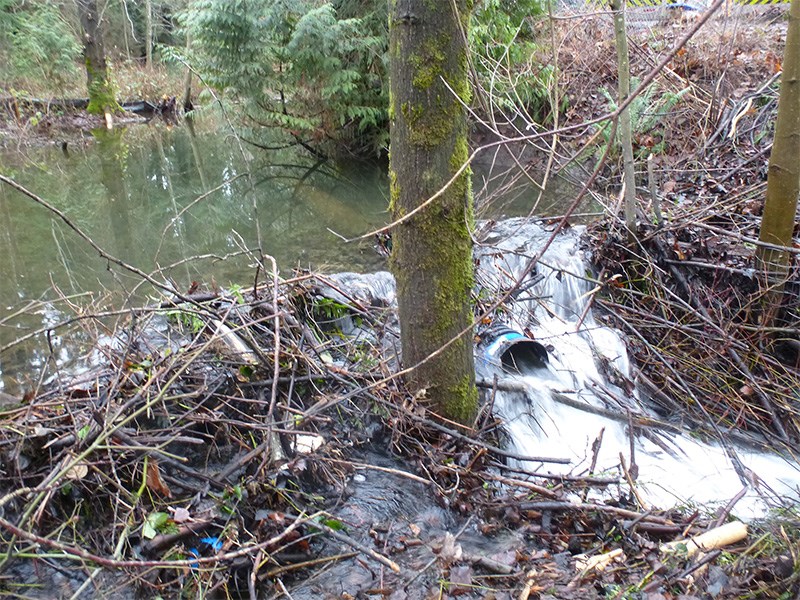
“For years they have been putting time and effort into rehabilitation of these streams. They’ve worked really hard to create these natural spaces and they are doing a great job, because now we’re seeing more wildlife.”
She believes the group should not fear salmon needs will be second to beavers, and that the two species can co-exist.
“It’s not one species against the other,” she said, suggesting the city’s effort to create a management plan will ensure this over the long term.
The city is working on management plans for beaver, bears and geese, as well as an overall watershed management plan, all of which she says are desperately needed because of the impacts of climate change and development.
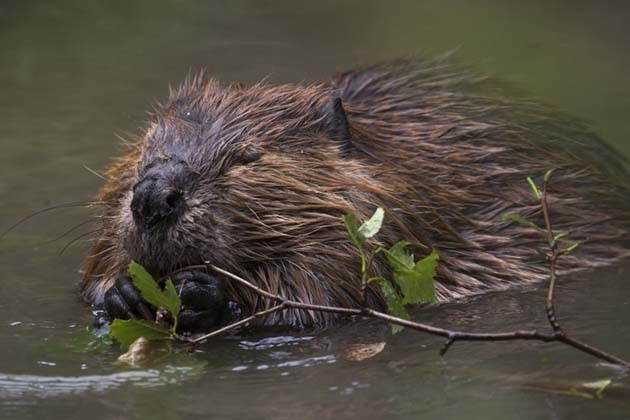
“All of these plans are based on co-existence, that’s a hinge… I think the new mayor and council are looking at this overarching, co-management of all our wildlife,” Taylor-Atkinson said.
But for BIMES, if the beavers are to stay, the group wants a long-term management plan that monitors the effect of beavers on the creek and the impacts on salmon.
As well, they would like to see a plan for plant and tree maintenance, water quality monitoring, gravel replacement and other work to ensure one species doesn’t outcompete the other.
“It’s been four decades since we started this work,” noted Rod MacVicar, co-founder of the Mossom Creek Hatchery along with Foster. “What we want to know is if they (beaver advocates) are in this for a long time.”
He has been doing some of his own research and believes the city needs to bring in experts to recommend the best way to deal with both the beavers and the fish.
While relocating the beaver family may upset some, MacVicar said it may be the best way to save the beavers while also protecting salmon in the creek. He’s worried what will happen when the beavers run out of food or, for example, if more trees are knocked down, shade reduced for salmon, or if the family increases in size. Because of a lack of predators, beavers are expanding their territory and the ponds they create can be good for fish but there may be detrimental impacts as well, if salmon can’t get past the dams to spawn.
“We don’t want it to look like it’s us versus the beavers,” Ryan further added. ”We are just looking for some balance.”
For Pat Dennett, who took a lead role in redeveloping the Mossom hatchery and education centre after a fire, protecting salmon is critical for a healthy ecosystem in Burrard Inlet.
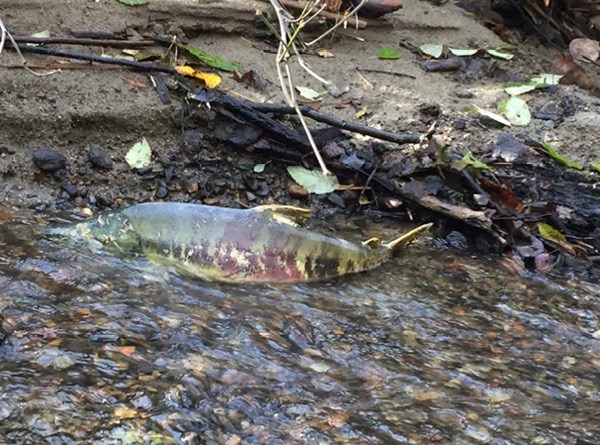
He doesn’t want the community to forget that Suter Brook, the lower part opened up from a culvert in the 1990s, used to be empty of salmon, virtually a dead stream. Now it supports more than 200 spawning salmon in a year, although numbers are down this year, because here, like elsewhere, salmon are at risk or in decline.
“The hatcheries have been critical in bringing back the salmon, which are critical to the ecosystem,” he notes, “We have a little story to tell about these successes and with our volunteers because we have been giving back to the community.”
There may be opportunities for improving the creek and ensuring it can sustain both beavers and salmon. Finding ways to ensure that fish can get through beaver dams to be able to spawn will be the job of the city as it works to establish a beaver management plan that protects and ensures the future viability of salmon.
